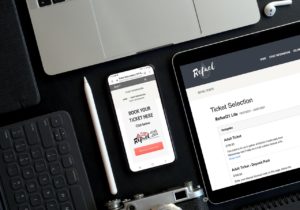
As a profession, event planning is rewarding and exhilarating in equal measure, but this is a calling that often comes with its own unique challenges. For example, as any planner will tell you, an efficient registration process is one of the most critical aspects of any event. After all, a seamless registration process not only makes for a positive attendee experience, but eases a planner’s workload. But achieving this win-win scenario takes considerable thought and so in this blog, we’ll consider the tools and strategies that planners can use to simplify their registration process, all while reaping the benefits of a more streamlined system.
Utilise Online Registration Platforms
The days of paper registration forms and manual data entry are thankfully long gone and today’s planners can now take their pick from among a wide variety of online registration platforms. This transition has ensured that registration is almost guaranteed to be quick and hassle-free. What’s more, these platforms enable planners to customise their registration forms, to send automated confirmation emails and also to accept payments online. Even better, these many platforms are built to integrate with a wider suite of event management tools, making it easier for planners to track and gather valuable data.
Streamline Your Forms, Tailor Your Questions, Maximise Your Registration Process
While online platforms have contributed considerably to the simplification of the wider registration process, planners should still approach the design of their registration form with care and thought. Try to keep your design simple and concise and only ask your delegates for the most essential details (i.e., their names and contact information). When creating your form, consider incorporating conditional logic into your wording so that delegates only see questions relevant to them.
For example, as part of your registration process, you may be asking delegates if they require accommodation and flights. If they answer ‘no’ the form will simply move onto the next question. However, if they answer ‘yes’, they will be asked questions pertinent to their hotel and flight requirements — questions that would have been of no interest to delegates who don’t require these details.
But above all, when creating your form, the more straightforward it is, the more likely it is that delegates will complete it without frustration.
Different Registration Options, Different Delegates
As a planner, it’s also worth offering various registration options to suit the needs of different groups of delegates during the registration process. For example, you’ll want to tailor your registration options to take into account delegates who have taken advantage of concessions such as early bird pricing, group discounts or different ticket types (VIP, general admission, etc.). Offering flexibility in registration allows attendees to choose the option that best suits their needs as delegates.
Utilise Mobile-Friendly Registration for Maximum Reassurance
Using a digital platform for registration is one thing, but ensuring that your event registration process is mobile-friendly is quite something else. By using responsive design to build your registration pages, you have the reassurance that your attendees will be able to register for your event from any device.
Accept and Integrate Online Payments
Your chosen registration platform may well enable you to accept payment for your event and by integrating this with secure payment gateways like PayPal, Stripe, or Square, you can help to streamline the payment process. By taking the foresight to include this kind of facility, your attendees can pay instantly, a point that reduces the need for manual payment processing.
Use Automation to Full Effect in Your Registration Process
Automation is a game-changer for event planners. When utilised efficiently, it can help to free a planner from some of their more mundane tasks. For example, automated confirmation emails can be set up to be sent to delegates immediately after they sign up for your event. If needed, you can also schedule automated reminders to be sent to delegates closer to the date of your event. This strategy reduces the likelihood of no-shows and ensures that attendees have all the necessary information they need prior to the start of your event.
Provide Dedicated Customer Support
Bear in mind that — even with a streamlined registration process — some of your attendees may encounter unexpected issues or have additional questions. In these instances, it’s worth making sure that you can direct delegates to a dedicated customer support team to help resolve any queries.
Analyse Post-Event Data for the Future
Just as you would with any other element of your event, take the time to gather and analyse your registration data along with any feedback you receive on your registration process. You may even consider conducting post-event surveys to collect attendee insight. Use this data to identify areas of improvement and to refine registration for future events.
An essential for planners and attendees alike, registration is one of the most critical parts of any event. With foresight and care, planners can simplify and streamline the process, a move that not only eases their work, but one that helps to create a memorable, meaningful and valuable event experience.
Running live, virtual or hybrid events? Want to maiximise event success and have the best registration process possible? Give your attendees an event experience they’ll remember with technology you can rely on. Learn how Eventsforce can make your next event fabulous and successful. Book your personalised demo now.






